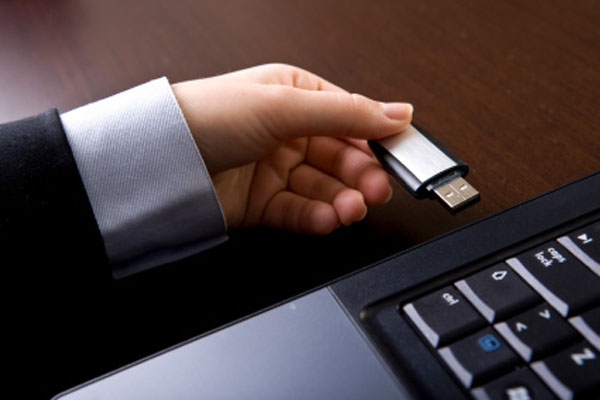USB storage in business
When we talk about storage in the enterprise, big systems are often front of mind and we often overlook the role that USB storage has to play. IT PRO investigates the state of play.

Cast a net out into the storage market right now and you can easily reel in an 8GB USB stick, SD card or MicroSD card for as little as 10. That's real progress when you consider that not too long ago a 32MB flash drive would require a second mortgage and take up more room than your mobile phone. With this high capacity portable storage, coupled with fast internet connections, data has become truly portable meaning that USB drives have morphed into an incredibly powerful commodity.
8GB is more storage space than a fair amount of netbooks on the market today some of which only have 2GB of internal memory. That said, they still manage to cram in a full operating system with the features you'd need from most desktop computers. 8GB is enough to house an Ubuntu install, a fairly decent MP3 collection, a selection of films, and every article every IT PRO writer has written for the past 10 years - with room to spare. This is as superb as it is alarming especially when you consider that you can fit all this onto something you could comfortably swallow without even realising it.
Many users are nomadic in their computing use, flitting between several computers in any one day or week. Those users might opt to save what they're working on to a flash drive and move it from computer to computer. Give that this is probably one of the most common uses today what issues are there to worry about?
Feels so write it can't be wrong
USB flash disks have a limited number of writes up to 10,000 writes for the majority of drives. You'd be surprised how quickly this number adds up if you're working directly from the drive and saving a document every few minutes. To limit these writes, your operating system will delay writes to the drive for as long as possible, for example if you are deleting a file and then copying a new file over the top. But, why do this in two stages involving two writes, when you can do this in one? This is why we find the "Safely Remove Devices" icon in the Windows system tray. Using this tells the operating system that we are finished and performs the writes it has been putting off.
Users who try to prevent this delayed writing from happening are running the risk of losing a lot of data. A tip here would be to always copy work to a USB drive do not move. Next, make sure you "Safetly Remove" the drive in Windows, or simply "Unmount" it in Linux, before you remove it physically from the computer.
The USB connector itself is designed for up to 1,500 insertions before it might start to show signs of wear and unreliability. Couple this with the limited number of writes the drive can handle and you should consider replacing your flash drive at least once a year, to minimise the risk of data corruption. If you're keen to avoid wastage, particularly in the current climate, perhaps consider demoting the drive to a less mission-critical function such as Vista Speed Boost.
Sign up today and you will receive a free copy of our Future Focus 2025 report - the leading guidance on AI, cybersecurity and other IT challenges as per 700+ senior executives
Knowing about this potential data loss and physical loss, keeping all your work on a flash drive has the potential for a disastrous consequences. It goes without saying that you should make regular backups of anything on the drive. This can be automated using tools such as Backup USB on Windows or one of the many scripts available for Linux like this.
-
 Trump's AI executive order could leave US in a 'regulatory vacuum'
Trump's AI executive order could leave US in a 'regulatory vacuum'News Citing a "patchwork of 50 different regulatory regimes" and "ideological bias", President Trump wants rules to be set at a federal level
-
 TPUs: Google's home advantage
TPUs: Google's home advantageITPro Podcast How does TPU v7 stack up against Nvidia's latest chips – and can Google scale AI using only its own supply?